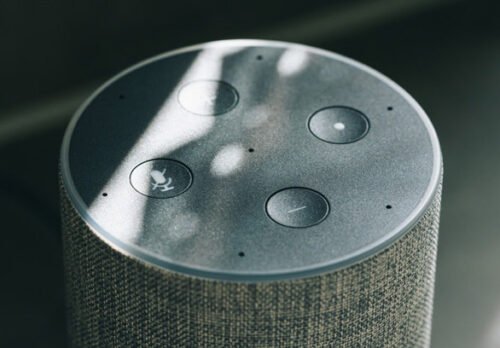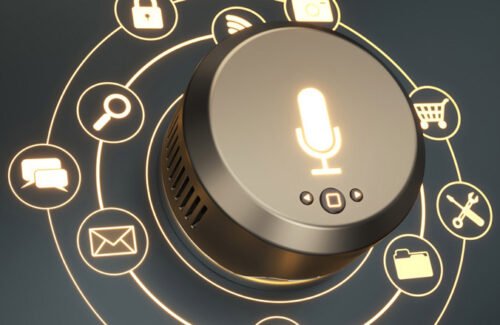
We’ve talked thus far about technological innovations that open up new possibilities for autonomous products and connected product ecosystems (from the factory to the home). We’ll now turn our attention to innovations in the ways people interact with products.
 Voice-activated systems are already well-established in customer service and customer support functions (as anyone who has tried to navigate quickly through a voice-based system to report a problem with their cable company or renew a prescription can tell you). And both Siri and Alexa have made voice-based interactions with our devices commonplace.
Voice-activated systems are already well-established in customer service and customer support functions (as anyone who has tried to navigate quickly through a voice-based system to report a problem with their cable company or renew a prescription can tell you). And both Siri and Alexa have made voice-based interactions with our devices commonplace.
But a demo of Google Assistant in the Spring of 2019 revealed what the future holds for voice interactions. Specifically, Google demonstrated that, using only voice commands, one could not only place phone calls, send messages, or set a calendar reminder, but also hail a ride, rent a car, reserve an airplane ticket, and more.
 First of all, voice is drastically changing how the web works. Today, e-commerce sites are built for humans. Indeed, user experience (UX) trends are helping optimize websites for human interaction. What Google Assistant demonstrates is that the days of human-centric websites are numbered. Instead, functional websites will need to be increasingly optimized for interaction with semi- or fully autonomous assistants.
First of all, voice is drastically changing how the web works. Today, e-commerce sites are built for humans. Indeed, user experience (UX) trends are helping optimize websites for human interaction. What Google Assistant demonstrates is that the days of human-centric websites are numbered. Instead, functional websites will need to be increasingly optimized for interaction with semi- or fully autonomous assistants.
This in and of itself will change the nature of customer experience and customer expectations. That is, one’s experience as a customer will have less and less to do with a personal experience and more and more to do with whether or not a virtual assistant had a good “experience”— i.e., whether or not the assistant was able to complete its task efficiently.

 Secondly, voice recognition and voice command technology, particularly when combined with IoT technology, will offer a range of new possibilities for product design. The most obvious uses are, first and foremost, in the home, where one can already use voice to dim lights, lock doors, and change the temperature. Voice commands can also be used in connected vehicles.
Secondly, voice recognition and voice command technology, particularly when combined with IoT technology, will offer a range of new possibilities for product design. The most obvious uses are, first and foremost, in the home, where one can already use voice to dim lights, lock doors, and change the temperature. Voice commands can also be used in connected vehicles.
It doesn’t stop here. For example, in the maintenance, repair and overhaul (MRO) space, voice-enabled applications are allowing maintenance workers to perform repairs while talking to a device itself, communicating with IoT sensors in the machine they are working on.
What’s more, advances in voice recognition in noisy environments will allow for voice interactions with IoTenabled devices even in loud factories or workshops. And German researchers have proposed ways for those working side-by-side with robots (so-called “cobots”) to use these advances to allow them to control these robots via voice.
 As people become more accustomed to voice-based interactions with their devices, cars, and homes, they will come to expect these capabilities in more and more of the products they use. Likewise, they will come to expect it from the technology they rely on at work. This means that product developers will need to consider how to voice-enable their products while also allowing them to rethink what a product might be capable of when the user can talk to it.
As people become more accustomed to voice-based interactions with their devices, cars, and homes, they will come to expect these capabilities in more and more of the products they use. Likewise, they will come to expect it from the technology they rely on at work. This means that product developers will need to consider how to voice-enable their products while also allowing them to rethink what a product might be capable of when the user can talk to it.